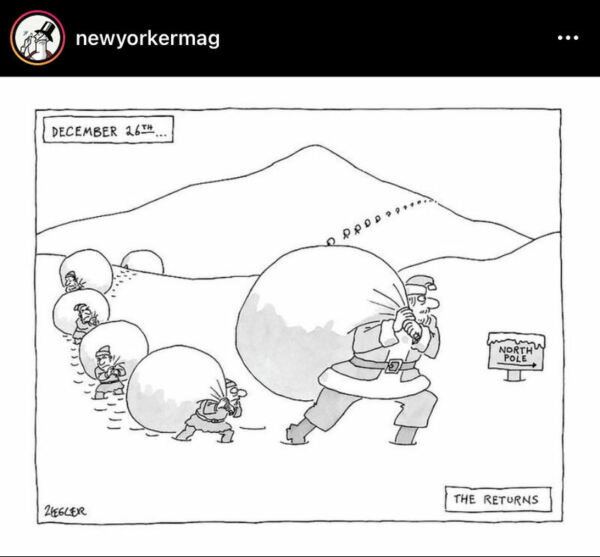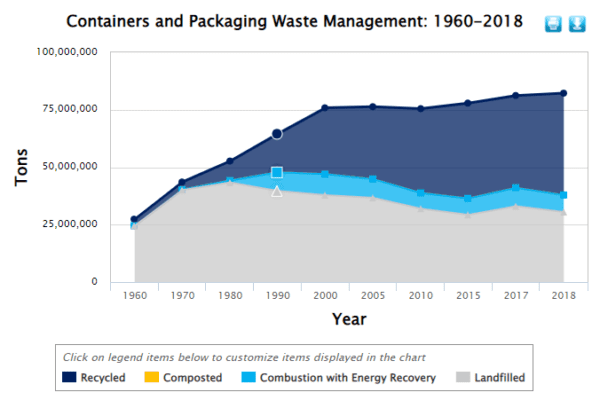It’s been another year of record-breaking ecommerce sales combined with unprecedented snarls across shipping and inventory ecosystems, so it should come as no surprise that return rates for 2021 are expected to have gone through the roof. UPS, for example, said that it will handle 60 million return packages from the 2021 holiday period alone, a 10% increase from the previous record set in 2020.

Indeed, the events of the last two years have made returns — previously accepted by many retailers as simply a cost of doing business — a key area of focus. Returns, unlike port backlogs and factory closures, are something that retailers can (at least to some extent) control.
“Research has shown that around 70% of returns can be controlled by the retailer,” said Navjit Bhasin, Founder and CEO of retail technology company Newmine in an interview with Retail TouchPoints. “Of course, that doesn’t necessarily mean that all 70% can be prevented, but retailers can take proactive measures to ensure that product is being kept. Product descriptions, consumer education, product quality, customer service — these are all tangibles that retailers can control.”
With supply chain and manufacturing disruptions set to continue well into 2022, Barcelona-based shoemaker Viscata is working with Newmine to offset the impact of some of these uncontrollable challenges by reducing the amount of product that gets returned. Returns for online purchases are notoriously higher than store return rates, particularly in the apparel sector where they can run as high as 30% compared to the average 8% to 10% for brick-and-mortar sales. So for a digital brand like Viscata, reducing returns can have a substantial impact on the bottom line.
Advertisement
“We are living in a period where there are a lot of uncertainties, both in terms of demand and in terms of cost,” said Guillaume Benoit, Global Supply Chain Manager at Viscata in an interview with Retail TouchPoints. “I hear a lot about how to optimize the return process to make it easier for customers, how to consolidate returns to reduce the carbon footprint, but I don’t hear much about preventing returns. At the end of the day though, what’s a more sustainable way of handling returns than not having to handle them?”
Here’s how Viscata has been able to do just that:
- With online returns in the apparel sector notoriously high, Viscata uses insights from existing data to identify and mitigate issues with product design so that more customers keep the products they buy;
- By improving the quality of the product information it offers online customers, Viscata has been able to ensure customers know exactly what they’re buying; and
- The fact that reducing returns can not only improve the bottom line but also aid sustainability efforts has helped the company justify its investment.
Getting at the Root of Apparel and Footwear Returns

Founded 10 years ago and launched on Amazon, Viscata’s espadrille shoes are handmade in Spain, but the majority of the company’s customers (approximately 90%) are in the U.S., making the reverse logistics involved in returns all the more complex. In fact, it was Viscata’s returns processing partner in the U.S. that first introduced the company to Newmine. Newmine’s Chief Returns Officer platform helps retailers identify the reasons products are being returned through data analysis, and then recommends actions that can be taken to mitigate those returns.
Part of the reason apparel brands in particular experience such high returns is the difficulty of translating the actuality of fashion products in a virtual environment. In fact, McKinsey estimates that close to 70% of all returns in fashion retail are due to poor fit or style.
Since June 2021, Viscata has been able to use the Chief Returns Officer to identify product design issues and improve their product. For example, there was one particular shoe that the Newmine platform flagged as being too large. When the Viscata team dove into the customer comments they realized that everyone was saying the same thing — the shoe straps were too loose. They realized this was because of a combination of a heavy sole and elastic straps that were being stretched when worn. “With this insight we actually went back to the factory and said, ‘Okay, we need to change this product to make it more solid, more robust,’” recounted Benoit.
“You know, some level of returns are good,” added Bhasin. “If those early returns didn’t happen, Viscata wouldn’t have even known about issues like this. The key is to learn from the early returns so you can prevent future ones.”
Transforming Data into Action
Of course, it’s not always financially feasible to makes changes to a product, especially in season, but retailers can also prevent returns by, for example, making sure product detail pages are accurate and include all the information customers are looking for. And for retailers that analyze their early returns data, they can use the product information they share with shoppers to mitigate potential problems.
“Is the customer being well educated when they’re buying a product?” asked Bhasin. “Tell them, ‘The sizing runs a little bit large so you may want to order a half-size smaller.’ Because the production run is already done, you have the inventory sitting there. As a brand, you’re already committed in your inventory and the goal is to still get the maximum margin. That’s the in-season opportunity. The long-tail opportunity is you can go back to the factories and talk about the next set of products that you’re bringing to the market to make sure the known issues don’t happen again.”
In the case of Viscata, the Newmine Chief Returns Officer flagged high returns across its product lines for beige products. Benoit and his team realized that there was an inconsistency in the way the color of beige products were being presented on its site. They went back and rephotographed these items to make sure the images were both more consistent and truer to life.
“Sometimes the trend is really clear and that’s where you can take a set of actions,” said Benoit. “The thing is, there’s an overload of data today, but how do you transform that data into a set of actions? That’s where the Newmine tool really helps. It allows you to look at the data in a really smart manner. At the end of the day, we want to increase the quality of the product we deliver to customers, and now we can use the data we already have to improve our product and therefore reduce the return rate.”
“Retailers have all this data sitting in various different silos, we just take and bring it forward in a meaningful fashion to pinpoint insights from that data,” added Bhasin. “Humanly it’s impossible to go and check every review or every transaction. But if the machine is already trained, as those sales are happening, as those returns are happening, as that voice-of-consumer data is coming in, it’s like putting it in the mixer and coming up with the right output.”
One Solution to Multiple Business Problems

This increased focus on the cost of returns is not being driven solely by retailers’ bottom lines. Consumers also are demanding that the companies they shop with operate in an environmentally conscious way, and there’s no denying the impact of returns on the environment. Only 54% of all packaging gets recycled, and an estimated 5 billion pounds of returned goods end up in landfills each year, according to the EPA.
“Sustainability is a broader mission, but when you get down to tactical execution, while at the same time you’re trying to cut costs, how do you still keep that broader agenda alive?” said Bhasin. “In the case of returns, you’ve already sold a product, you generated a top-line demand, so the question is, how do you retain as much of that demand as possible and ensure there is no revenue leakage? That’s where the economic and environmental impact [of returns reduction] converge.”
For Benoit, that’s the very appeal of finding ways to prevent returns before they happen. When done right, it can be a holistic solution that solves several business needs at the same time: “It’s not just about reducing the return rate and increasing margins,” he said. “It’s also a set of actions that drive an increase in customer experience and quality.
“We all have a lot of pressure on cost right now, but you need to keep on investing in these initiatives that will improve your business and generate savings,” added Benoit. “The truth is that [solutions like] Newmine will add cost, but they will generate more savings and they will generate an increase in customer experience.”









